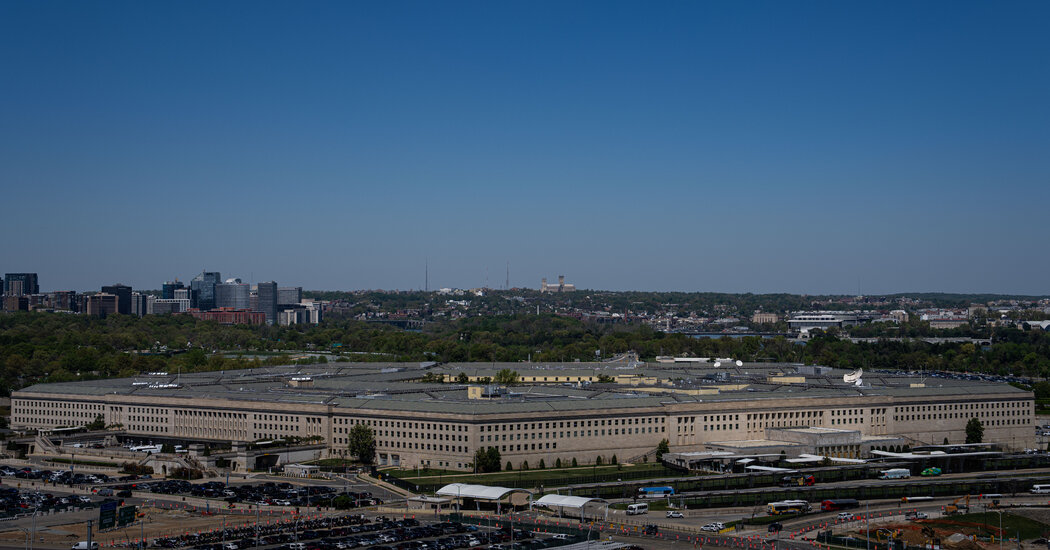U.S. Pier for Gaza Aid Is Failing, and Could Be Dismantled Early
The $230 million temporary pier that the U.S. military built on short notice to rush humanitarian aid to Gaza has largely failed in its mission, aid organizations say, and will probably end operations weeks earlier than originally expected.
In the month since it was attached to the shoreline, the pier has been in service only about 10 days. The rest of the time, it was being repaired after rough seas broke it apart, detached to avoid further damage or paused because of security concerns.
The pier was never meant to be more than a stopgap measure while the Biden administration pushed Israel to allow more food and other supplies into Gaza through land routes, a far more efficient way to deliver relief. But even the modest goals for the pier are likely to fall short, some American military officials say.
When the pier was conceived, health authorities were warning that the territory was on the precipice of famine. In recent weeks, Israel has given relief organizations greater access, but the groups say the situation remains dire.
The Biden administration initially predicted that it would be September before surging seas would make the pier inoperable. But military officials are now warning aid organizations that the project could be dismantled as early as next month, a looming deadline that officials say they hope will pressure Israel to open more ground routes.
President Biden ordered the U.S. military to begin building the pier in March, at a time when he was being sharply criticized for not doing more to rein in Israel’s military response to the Oct. 7 Hamas-led attacks.
The first truckloads of aid began moving ashore on May 17. Since then, the project has struggled, while many Gazans are experiencing immense hunger, aid groups say.
In the latest blow to the aid effort, the U.S. military said on Friday that it would temporarily move the pier to keep it from being damaged by high seas.
The decision “is not made lightly but is necessary to ensure the temporary pier can continue to deliver aid in the future,” the U.S. Central Command said in a post on social media, stating that the pier would be towed to Israel. Sabrina Singh, a Pentagon spokeswoman, said on Monday the pier could be reattached and aid deliveries resumed later this week.
The pier “is not working, at least not for Palestinians,” Stephen Semler, a co-founder of the Security Policy Reform Institute, wrote in an essay for Responsible Statecraft, a Quincy Institute publication. Mr. Semler argued that the pier had succeeded only in providing “humanitarian cover” for the Biden administration’s policy of supporting Israel’s bombardment of Gaza.
U.S. officials say that in addition to delivering aid with many of the land routes closed, the pier also threw a spotlight on the urgent need to provide more humanitarian assistance overall to Gaza. But the project’s challenges have frustrated and disappointed top Biden administration officials.
Despite the weather-related delays and other problems, there has been one bright spot: The pier has not yet been hit in an attack.
Earlier this month, the Pentagon rejected claims on social media that the pier had been used in an Israeli raid that freed four hostages but that led to the deaths of scores of Palestinians.
In the hours after the rescue, video circulated online showing an Israeli military helicopter taking off from the beach with the U.S. pier in the background.
After the videos emerged, U.S. Central Command said in a statement that the “pier facility, including its equipment, personnel, and assets were not used in the operation to rescue hostages today in Gaza.”
American military officials were especially concerned about possible attacks because reports had emerged after the rescue that the U.S. provided intelligence on the hostages before the operation.
Last week, Maj. Gen. Patrick S. Ryder, the Pentagon press secretary, denounced “inaccurate social media allegations” that the pier was part of the rescue, but said that “there was some type of helicopter activity” near the pier during the operation.
Arlan Fuller, the director of emergency response with Project Hope, said the image of “the helicopter taking off from the beach really was contravening to the overall use of the humanitarian space.” He added that the image “muddies the waters” and could put humanitarian workers on the pier in greater risk.
Added to that, Central Command had just announced that the pier was usable again after a nearly two-week hiatus for repairs when the hostage rescue effort took place. A day later, the World Food Program said it had again paused aid distribution from the pier because of security concerns.
Mr. Biden surprised the Pentagon when he suddenly announced the pier in his State of the Union address. Army engineers built and deployed the pier in two months time, with about 1,000 U.S. troops now involved in some part of the project.
When Mr. Biden announced the project, officials predicted that it would help deliver as many as two million meals a day for Gazans. The Pentagon calls the project JLOTS, for Joint Logistics Over the Shore, a capability that it has previously used for humanitarian relief in Somalia, Kuwait and Haiti.
On the days that the pier has been in working order, it has enabled the delivery of thousands of tons of aid to Gaza, officials say.
Vice Adm. Brad Cooper, the Central Command deputy commander, recently said that the issues with the pier “stemmed solely from unanticipated weather.”
Usually, spring and early summer on the shores of Gaza are calmer. “Plan on X and nature sends 2X,” said Paul D. Eaton, a retired major general who was in Somalia in 1993 when the U.S. military put a pier in place there to deliver humanitarian aid to civilians caught in war.
Several congressional Republicans have criticized the project for its cost and potential risk to U.S. troops.
“This irresponsible and expensive experiment defies all logic except the obvious political explanation: to appease the president’s far-left flank,” Senator Roger Wicker of Mississippi, the senior Republican on the Armed Services Committee, said earlier this month.
Aid workers say the deliveries of food and other supplies have been slowed by bottlenecks for shipments at border crossings caused by lengthy inspections of trucks, limited operating hours and protests by Israelis.
Israel has argued that there are no limits on the amount of aid it allows to enter. It regularly blames disorganized aid groups — as well as theft by Hamas — for failure to deliver food to Palestinians efficiently.
Central Command said on Friday that 3,500 tons of aid had been delivered to shore using the pier since the operation started on May 17, with about 2,500 tons of that delivered since the pier was re-anchored and resumed operations on June 8.
But much of the aid that makes it through is not reaching Palestinians, aid groups said, because of the logistical and security issues, and looting.
Aid workers say the equivalent of only seven truckloads of assistance is arriving in Gaza via the pier each day, far short of the goal of eventually ramping up to 150 trucks per day.
“The volume is negligible,” said J. Stephen Morrison, the director of the Global Health Policy Center at the Center for Strategic and International Studies. “And the seas are just going to get rougher and rougher.”


